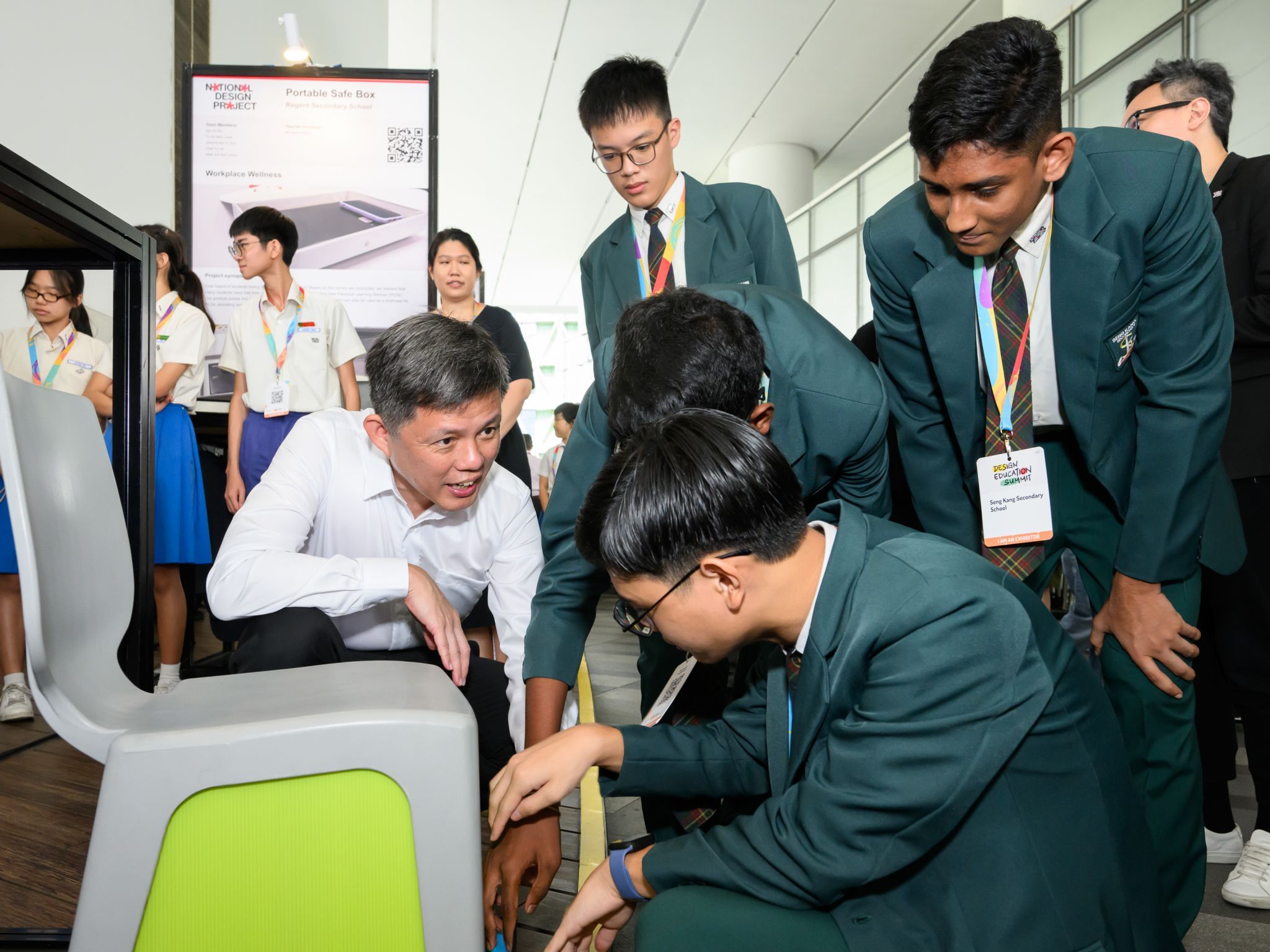‘It starts in schools’: Design thinking skills needed for the future workforce - Singapore’s education ministry
By Si Ying Thian
Public school educators increasingly see design thinking as a future-forward skill to be taught at an early age, but it will take a concerted effort among teachers, students and policymakers to incorporate it into curriculum, said speakers at this year’s Design Education Summit.
-1699958503294.jpg)
This year's Design Education Summit sought to debunk the myth that design thinking is only for designers, artists or “techies”, and highlighted its relevance to policymakers and the future workforce. Image: DesignSingapore Council.
“Educators must prepare students to thrive in a world that does not exist,” highlighted Laura McBain, managing director of Hasso Plattner Institute of Design at Stanford (d.school), a design thinking institute based at Stanford University.
She was speaking at the Design Education Summit, a biennial event organised by DesignSingapore Council, Singapore’s national agency for design, attended by educators, designers, researchers and digital experts.
This year’s theme, “I’m N̶O̶T̶ creative: Nurturing the next generation of changemakers,” sought to debunk the myth that design thinking is only for designers, artists or techies, and highlighted its relevance to policymakers and the future workforce.
“Design is not just about aesthetics. It’s not just about art,” said Liew Wei Li, Director-General of Education with Singapore’s Ministry of Education (MOE) who presented at the summit.
Rather, design thinking skills facilitate problem-solving around users’ needs, driven by a specific intention or for a purpose, she explained.
This ranges from redesigning policies to teaching processes. GovInsider earlier covered GovTech Singapore’s use of design to better support less tech-savvy Singaporeans in accessing digital services and to build experiential mobile apps for students’ learning.
Where design thinking fits into national growth
In his opening address, Singapore’s Minister for Education, Chan Chun Sing, shared how Singapore could use design thinking to its strategic advantage.

Firstly, design thinking can enable Singapore to distinguish itself as a nation based on the ability of its people to value-add to the world. Secondly, beyond solving or managing our own issues, design thinking can help solve bigger problems that the rest of the world may be facing, such as sustainability.
Highlighting the value of design thinking in policy-making, Minister Chan spoke about redesigning the physical environment and healthcare policies for the aging population.
A key message at the summit was also the growing relevance of design thinking skills in preparing the next generation for an ever-changing world.
McBain from d.school addressed how design thinking is instrumental to some of the fastest-growing industries such as blockchain, gene editing and AI.
“We are constantly [being] disrupted and need to be ready to adapt to these changing contexts,” she said.
Takeaway #1: It’s a concerted effort
Liew from MOE said that the responsibility of building design thinking capabilities is shared among educators and policymakers, and that it starts in the school setting.
To inculcate design thinking among students as young as primary school-age, MOE has expanded a project-based course to primary and secondary school levels, which was previously only offered to tertiary students taking GCE A-levels or International Baccalaureate.
Another MOE-led initiative is the implementation of the Applied Learning Programme (ALP) in all primary schools this year, which engages industry partners for hands-on learning projects.

To set the ground for bottom-up initiatives to emerge, MOE also implemented Singapore Student Learning Space (SLS), an online learning platform, for both teachers and students to design their own lessons using pedagogical scaffold, a design tool which helps educators customise teaching processes.
Liew also highlighted that teachers are taking the initiative to design physical learning spaces to suit the activities they want to encourage. For example, schools can set up movable and flexible furniture in the library so that students can easily shift studying zones into discussion spaces.
“My dream is for design [thinking] to become a core curriculum in primary, secondary and tertiary schools because it empowers students to be able to do things that they previously couldn’t do,” said Hans Tan, the summit’s curator and associate professor at the National University of Singapore (NUS) to GovInsider.
Takeaway #2: Learning is two-way
Another key message from the summit was the importance of “an appreciation of diverse perspectives and diversity in problem-solving methods,” as Minister Chan said.
As a result, teaching and learning about design thinking is a two-way process between students and teachers, highlighted Lee Li Juan, Head of Information and Communications Technology (ICT) department at Peicai Secondary School in her sharing.
Lee’s presentation centered around the lessons learnt from Peicai Secondary School’s partnership with Singapore University of Technology and Design (SUTD) to redesign its ALP curriculum for students.
The focus of its ALP has since shifted from health and food science to social issues to “stay relevant with changing times.”
“Over the last few years, we noticed there was a decrease in student interest in ALP, and it [might be] due to the changing student demographics [among other] multifaceted challenges in the external environment. These cause some of our educational priorities to change,” said Lee.
SUTD was tasked with upskilling the teachers to conduct the programme, and conducted interviews with students to co-develop the new curriculum.
Takeaway #3: ‘Prioritise iteration over perfection’

“Very often in Singapore, we are very logical, but we also tend to be quite linear in the way we think about things. There are strengths in being logical and linear, but they can also hold us back,” said Minister Chan.
Lee also reflected on her experience managing the different standards across her students’ projects, and having to prioritise iteration over correcting them to perfection.
“We want to prioritise the opportunity to just allow our students to share their ideas, then get feedback from the audience to iterate on their projects."
